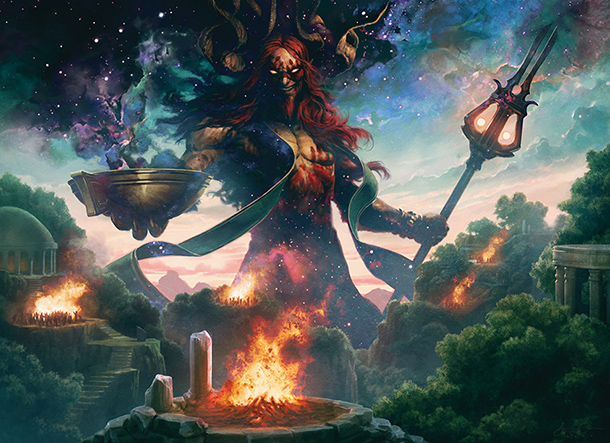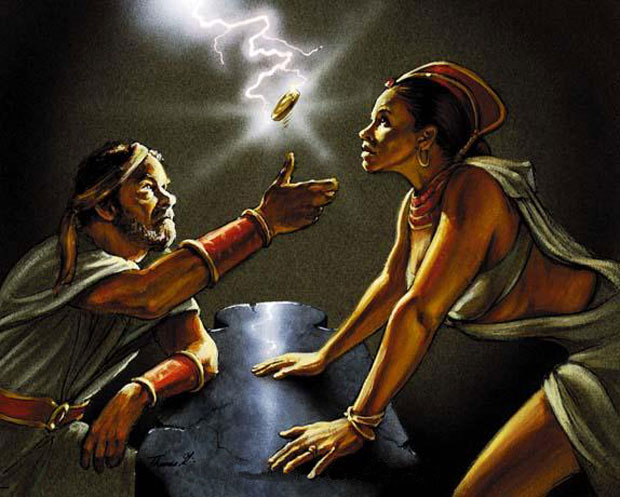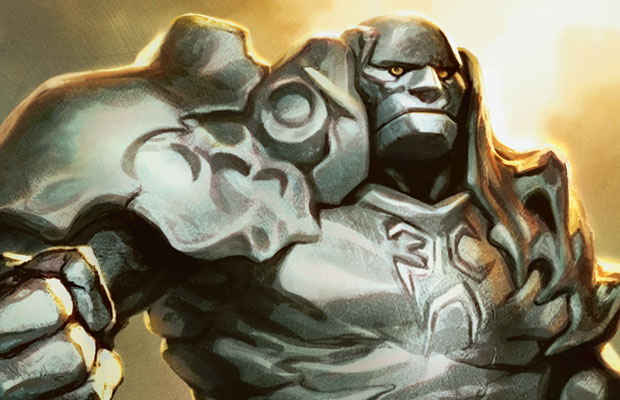By: Jared Yost
Though the cold winds blow, at times so fiercely that it feels like my face is going to freeze off during my walk to work, there certainly isn’t any lack of heat sparking the fires of speculation in the Magic market recently. I’ve noticed quite a few trending cards across several different formats I’d like to consider further.
Standard
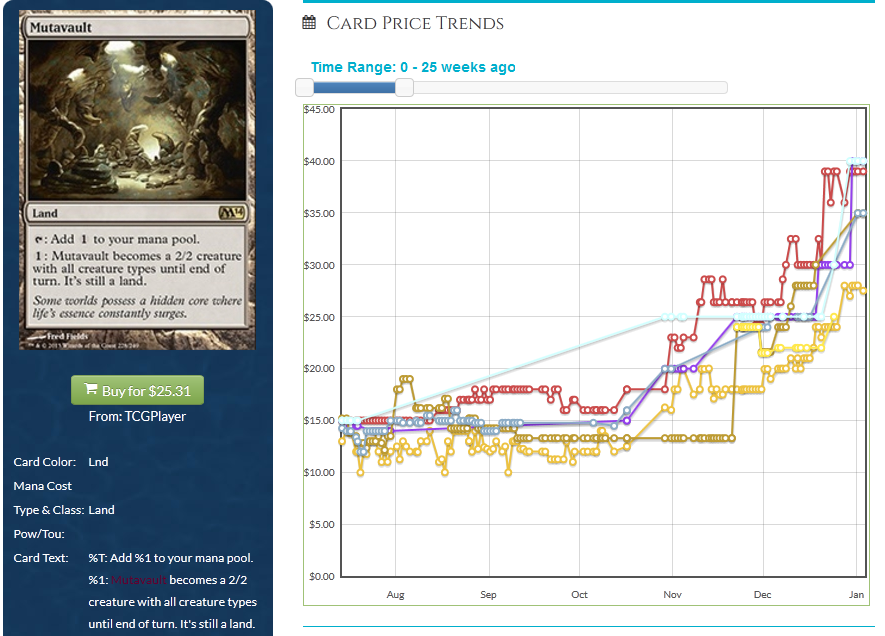
Mutavault
Most copies of Mutavault on TCGPlayer are now around $35. I don’t think Mutavault can sustain this price for very long, especially since Born of the Gods is soon to be released. With the advent of multicolored demigods and the potential for more two and three color decks in Standard, I believe that Mutavault can’t increase in price much further. Even Thragtusk and Snapcaster didn’t make it this high. I don’t expect Mutavault to be worth more than all the mythics in Standard – especially since it is a reprint! I’ve cashed in and taken my profits; I suggest you do the same.
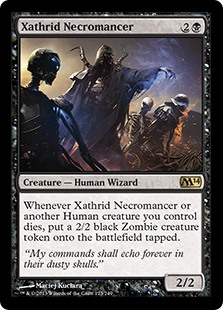
Xathrid Necromancer
Xathrid Necromancer has been on the rise ever since since his appearance in the Grand Prix Shizuoka finals in both decks. It appears for the moment to have stabilized around $4, and that is about $1 higher than it was in previous weeks. Unfortunately, I am not sure if there is enough support for the card to grow further. He is a card with a very powerful effect but I am not sure the white weenie (splashing black) or Orzhov midrange decks will match the popularity of Mono-Blue and Mono-Black devotion until the next set release. I don’t expect his price to change much until that time. I would hold any copies for now, and if support does not present itself after Born of the Gods is released, jump ship.
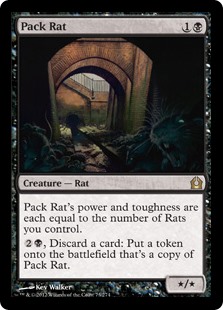
Pack Rat
Buoyed by the success of Mono-Black devotion, Pack Rat continues to see marginal increases as well. It is also up from $3 to around $4. Once Born of the Gods is released, I expect that Pack Rat will share a similar fate with Xathrid Necromancer, seeing a decrease in demand due to the rise of multi-color strategies. I don’t expect that Pack Rat can maintain $4 for much longer so get rid of any extra copies while you can.
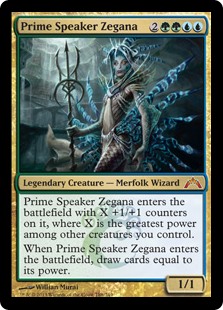
Prime Speaker Zegana
Prime Speaker Zegana is a card talked about in the past on this blog, and with the spoiling of Kiora, the Crashing Wave it looks like sellers have increased her price by $1 because of the potential interaction of the two cards.
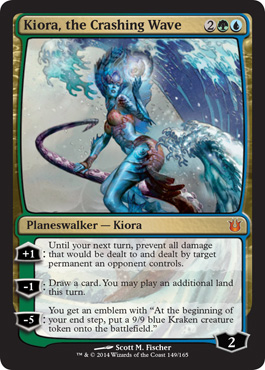
Whether or not Zegana will have a home in new Standard decks after Born of the Gods is hard to predict at this point. We already have Prophet of Kruphix, Master Biomancer, and a whole slew of other tools available to U/G players – I’m not sure if Kiora will be enough to make it better than other existing archetypes. As a Planeswalker she seems very underwhelming to me. Don’t forget, Travis mentioned buying Planeswalkers at a set’s release is a trap – definitely agree here especially in light of her low loyalty count.
Zegana has potential and we should all keep a close eye on her moving forward. Even without Standard she is a great casual target, if you need another reason to pick up at least a few of them.
Modern
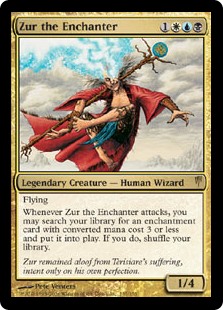
Zur the Enchanter
Zur has already spiked twice. Starting out around $5 in July, he spiked in November to around $10 after a new Esper aggro aura brew popped up. From there, he slowly ticked up to around $15 once the deck started catching on among Modern players, and then seemed to stabilize.

More recently, players have started scooping up all the copies remaining on TCGPlayer and other vendor websites. As of Friday, there were only four listings on TCGPlayer with NM copies going for about $20. Does Zur have the potential to keep rising higher? He is a popular EDH general, and with the added popularity from Modern could he be a $25-$30 card? Most likely not.
I would hold any copies you might have of Zur at this point (don’t buy in if you have not) to see where the price ultimately stabilizes. This could be a case of all hype, as I haven’t seen a consistent winning Modern list that utilizes Zur outside of MTGO. This is a case of hold until Modern season, then trade away if the hype doesn’t add up.
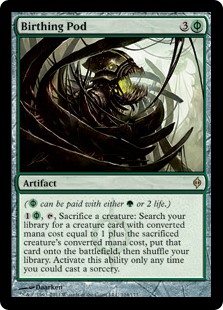
Birthing Pod
Birthing Pod is a modern staple, and it looks like the price is starting to catch up to the massive demand it will see come Modern season. Copies are listing for around $6 on TCGPlayer, and I expect this upward trend to continue through Modern season. There will be a high demand for Birthing Pod and you want to pick up your copies now before the price reaches the high point during Modern season.
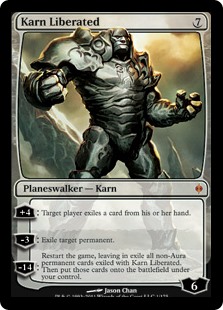
Karn Liberated
Karn has also seen a sharp rise in price over the last month.
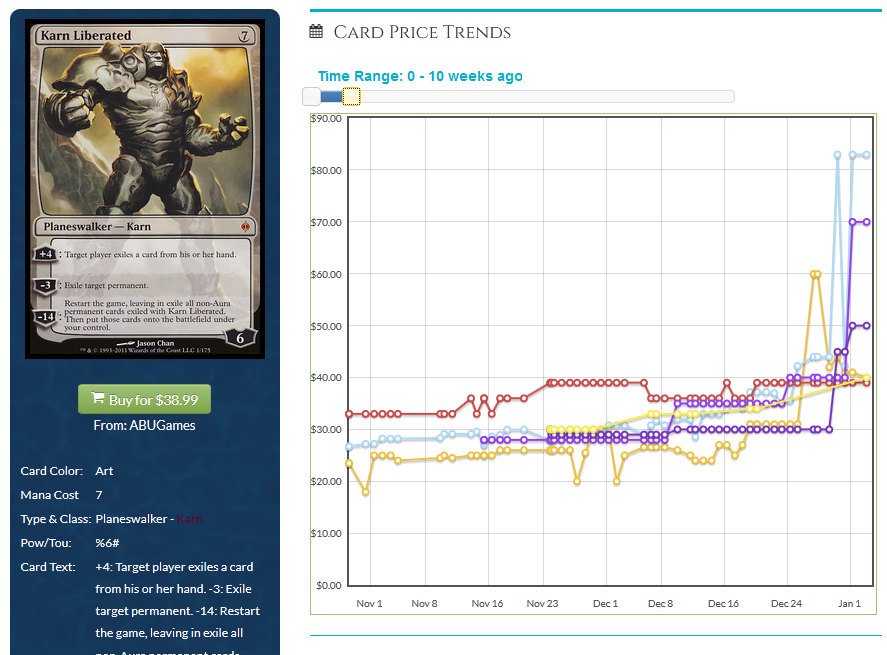
There are still plenty of copies listed on TCGPlayer for around $45, which looks like it could be a good deal if you can pick them up before he reaches his new price point of $50. Karn is a staple card in the Urzatron decks of Modern and I believe that this new price is the market correcting itself. Pick up your copies now on the cheap in preparation for Modern season.
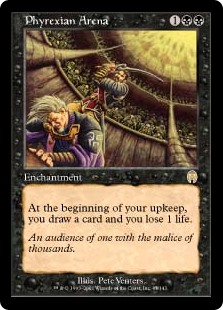
Phyrexian Arena
Phyrexian Arena’s rise in price is certainly interesting. In addition to Phyrexian Obliterator, it appears that Arena will have a home in the new Modern Mono-Black devotion deck. Outside of MTGO this deck hasn’t put up any real results, so the rise in price may be due purely to speculation of the deck’s success. I believe that the price in this case is also driven by casual demand, as Phyrexian Arena has been printed several times and yet still seems to retain an average price of $6-$7. I would stay away from this card as a speculation target because results are still pending, and I don’t think the price will rise that much further because of all the reprints Arena has seen.
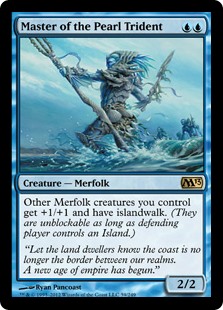
Master of the Pearl Trident
As of Friday, Cardkingdom has upped their buy price on MotPT to $2.45 – this price is the same or higher than sellers are selling the card for on TCGPlayer. When the spread goes negative like this, they believe that the card will have real momentum in the future, and it is a sign that you should start picking up copies yourself. I’m not sure if MotPT will be hitting $5 or higher any time in the near future, but it’s not exactly out of the question – Merfolk could be making big waves in Modern season because of Master of Waves. I would pick up a few copies if you can get them at $2.50 or less because I believe that is the new floor for Master of the Pearl Trident, having only been printed in a single core set.
Legacy
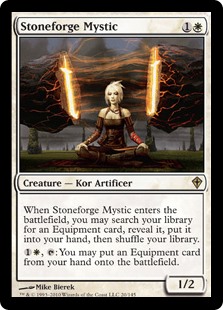
Stoneforge Mystic
Stoneforge Mystic has seen a recent surge in price over the last week too.
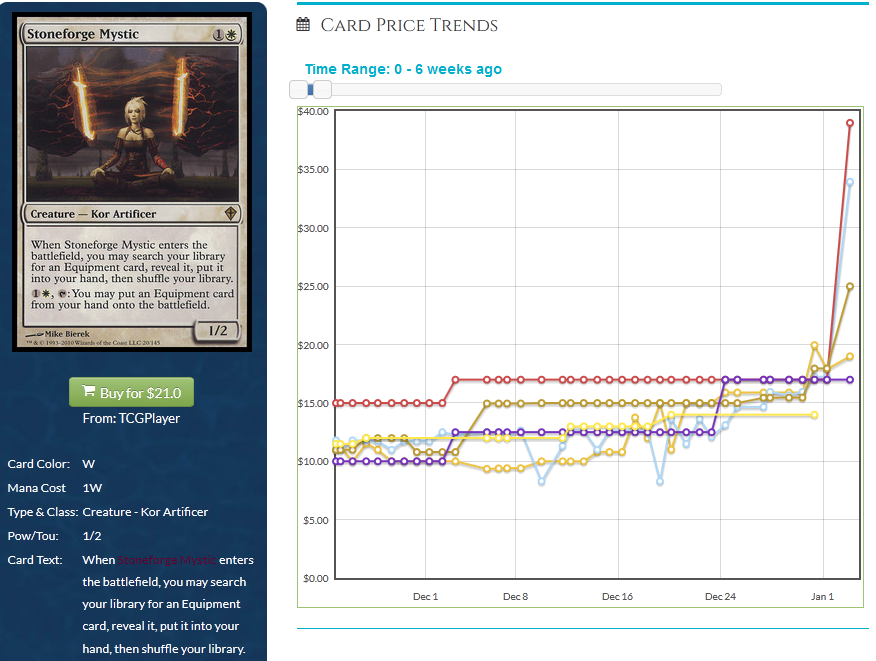
I attribute this to the True-Name Nemesis factor – since TNN decks have become extremely popular in Legacy, and Stoneforge Mystic is one of the key cards to fetch equipment to attach to your TNN, it makes sense that Stoneforge would also rise in price to match the demand of the TNN decks.
Even without TNN, Stoneforge Mystic was due for a rise in price eventually. TNN just expedited that hike. She has already seen play across several different legacy archetypes as a three or four auto-include (Death and Taxes, Maverick, Junk, Bant, and Stoneblade to name some more,) so the price rise makes sense to me.
Until a reprint, I don’t see her price going down. Her new price will settle in the $25-$30 range and will stay there until she is reprinted. (Even though she already was reprinted as a 2-of in an event deck.)
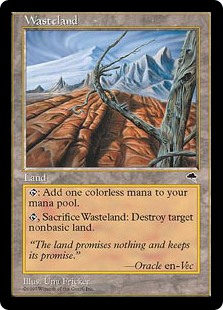
Wasteland
Wasteland has again reached new highs, this time spiking to $75. Like it’s companion Force of Will, Wasteland has now become an absurdly expensive uncommon in Legacy due to its rarity and ubiquitous use across the decks of the format.
Speaking of Force of Will, I think it is pretty funny that Wasteland has now become more expensive – does this mean that it’s a good time to start picking up Force of Wills again? They’ve gone down from their highs of $85 just last year.

There are plenty of copies available on TCGPlayer for around $65. However, this could also be the new price for for Force of Will – Abrupt Decay makes counterspells less useful, so if Wizards continues this trend and prints more uncounterable spells in the future it could continue to affect FoW’s price as well. Considering this, I still think that picking up Force of Will for $65 is a good price.
Back to Wasteland – I believe the new price is here to stay for the time being because Wasteland is a format staple and will never go out of favor in Legacy. Watch down the road though – it could pull a Force of Will and suddenly drop again to $60-$65, at which point you want to start picking them up again.

Infernal Tutor
Ah, here is a card that I’ve been expecting to rise for awhile. Infernal Tutor only sees play in Storm decks (ANT, TES, and other Storm variants,) yet it consistently is included as four-of since it is essentially Demonic Tutor alongside LED. Lion’s Eye Diamond has seen it’s price near double, from $45 in 2012 to the $85 that it now commands and Infernal Tutor was, in my opinion, the next card on the list to see a price hike. It is a rare from a small third set that is now extremely hard to find. Combine that with the fact that Storm is on the rise to combat the tide of True-Name Nemesis decks that have hit the Legacy scene and you have a price surge. The price for Infernal Tutor is also here to stay, as Storm decks will always be a threat in the Legacy metagame.
Commander
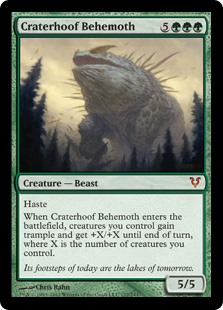
Craterhoof Behemoth
Craterhoof Behemoth has been on a rise in price since early November, and I don’t think it is just the casual players that are creating the price hike in this case. Sure, Commander loves Craterhoof Behemoth. However, I think his price is also being driven by demand from elsewhere. Modern may have a role in the rise in Craterhoof’s price because green devotion, like black devotion, could be a possible deck come next Modern season. Vendors and players alike are raising this card’s price in anticipation of it performing in Modern in addition to all of the casual love it currently gets. I’ve mentioned Craterhoof before, and I would pick up my copies now before the price starts getting out of hand.
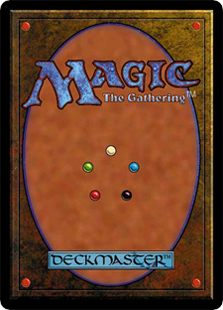
Invoke Prejudice
Invoke Prejudice is a classic case of a buyout – all of the copies that were around $50 were bought out last week with the remaining copies priced at an absurdly high $175. The card is strictly a casual card, as it sees no play outside of Commander and other casual formats. I expect this card to drop back down in price, though not as low as $50. It will most likely settle in at a new price around $80-$95 because of the extreme rarity. Other English-edition Legends cards have followed a similar pattern. In this case, Invoke Prejudice was the next buyout (certainly not a cheap one, though!) and I would stay away from picking up any copies of this card until a new price has settled in a few weeks or months.
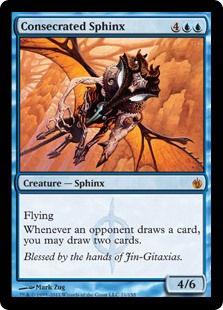
Consecrated Sphinx
Consecrated Sphinx has been on a slow, steady rise since the summer and has also recently seen a buyout on TCGPlayer sites.

The new price for Consecrated Sphinx is firm. The proper buy in time for Consecrated Sphinx was when the floor was $4, so if you have any extra copies now would be a good time to sell or trade them. If you are looking to pick up copies of Consecrated Sphinx, $10 isn’t awful but don’t expect another increase in price anytime soon. It took this long to get to $10, and in order to get a good return on a $10 investment the card would need to hit $20, which I don’t foresee happening for another few years – and even then, there is a chance that it could be reprinted which would forever keep the cap around $12-$15.
Wrapping Up
To summarize, I believe that Standard and Modern have the most unpredictable prices from the recent spikes and upward trends – Mutavault will have a hard time breaking $40 due to the various reasons I mentioned, and Zur and Phyrexian Arena need results before I am willing to put the kind of cash vendors are asking for into purchasing them.
On the other hand, cards in Legacy and casual favorites generally have a predictable price surge – Stoneforge certainly isn’t going anywhere without a reprint, and Wasteland, Consecrated Sphinx, and Craterhoof Behemoth were all predictable.
However, you want to watch out for the price spike trap – avoid emotional investing in cards like Invoke Prejudice. If you haven’t heard of it before and it hasn’t put up any results, stay away before a card settles to its real price.
